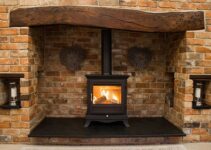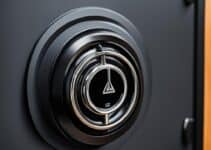As an individual who cherishes the warmth and ambience provided by a log burner, I fully understand the significance of investing in an appliance that offers both longevity and performance. The life expectancy of these cherished wood-burning stoves typically ranges between 10 to 20 years, yet the actual log burner lifespan can often surpass expectations with proper care and maintenance. Taking to heart the guidance provided in a comprehensive log burner maintenance guide ensures that diligent upkeep solidifies the durability and longevity of this heating option.
Maintaining a log burner, from my own meticulous experience, is not merely a matter of cleaning but also involves adherence to manufacturer recommendations and professional advice. Such attentiveness extends its life, maintains a commendable level of safety and elevates the overall efficiency of the burner. Thus, when discussing log burner durability, it’s essential to focus on the quality of maintenance just as much as the robustness of the stove itself.
In the forthcoming segments, I will guide you further on recognising the tell-tale signs that hint at the need for replacement, the expert perspectives on log burner life expectancy, the paramount importance of professional installation and the unbeatable advantages of a thorough maintenance routine. Let’s ensure that the comforting crackle of a log fire remains a staple in our homes for years to come, radiating not just heat, but also the assurance of well-placed investment.
Understanding the Lifespan of a Log Burner
When considering a log burner for your home, its lifespan is an essential factor. The durability of a wood stove is not fixed; it is influenced by how well the log burner is cared for, along with other significant factors. I’ll delve into these key aspects that not only extend the life of your wood stove but also maximise its efficiency and safety.
Factors Influencing Log Burner Longevity
Meticulous log burner care is integral to prolong its service years. Several elements contribute to wood stove longevity, and understanding these can aid you in maintaining the burner effectively. Allow me to illuminate the crucial factors at play:
- Usage Frequency and Methods: Over-firing or underutilization can both adversely affect the log burner’s condition. A balanced usage is optimum.
- Environmental Influences: External conditions, such as the humidity level of the installation area, can accelerate wear and corrosion.
- Regular Maintenance: Adopting a routine for cleaning and inspecting your wood stove is vital in identifying issues early on.
These practices contribute to combative measures against natural degradation, ensuring your wood stove remains a hearty focal point of your living space for years to come.
The Role of Manufacturing Quality in Durability
The ethos of ‘quality over quantity’ rings true for the manufacturing of log burners. High-quality design and robust materials are the bedrocks of wood stove durability. Let’s consider the hallmarks of a well-made log burner:
- Material Excellence: The use of premium grade steel or cast iron significantly enhances the stove’s resistance to high temperatures and thermal stress.
- Construction Integrity: Precision in the assembly and an attention to detail ensure that the log burner can withstand rigorous use.
- Innovative Features: Innovations such as airwash systems and cleanburn technology not only cater to environmental standards but also reduce wear.
- Renowned Brands: Companies with a reputation for quality are more likely to produce long-lasting log burners.
Investing in a log burner with superior manufacturing quality may have a higher initial cost, but it will pay dividends in longevity and reliability.
As a professional journalist with a wealth of experience, I can confidently assert that the log burner’s care, environmental conditions, and ultimately, the calibre of manufacturing define the realistic expectation of your log burner’s lifespan. By highlighting the right factors affecting wood stove longevity, you can ensure that your home is warmed by your cherished log burner for the longest possible time.
Signs Your Wood Stove Needs Replacing
As the seasons turn, I often reflect on the performance and safety of my log burner. Recognising when it’s time for a log burner replacement is critical to ensure both efficiency in heating and safety within your home. Let’s explore futher the signs for log burner replacement and what these log burner warning indicators mean for the health of your stove.
Warping and Cracking as Warning Indicators
One of the first warning signs that catch my attention are any changes in the physical condition of the log burner. Warping or cracking of the stove’s body can indicate that the material has been overstressed by heat. This might compromise the structural integrity, leading to inefficient combustion and ultimately, the need for a replacement.
Too Much Smoke: A Symptom of Inefficient Combustion
Excessive smoke output is another red flag. It suggests that the combustion within the log burner is not as clean or efficient as it should be. An efficient system should facilitate complete combustion with minimal smoke production, thus any deviation from this norm is a cause for concern, potentially pointing to increased wood fuel usage.
Excessive Creosote Buildup: A Red Flag
Excessive creosote problems are not just an inconvenience but a serious warning sign of poor burner performance. Creosote, a combustible residue resulting from burning wood, should not accumulate to the point where it impedes the chimney’s function. If I notice such buildup, it’s an immediate cue to scrutinise the condition of the log burner more closely, as it can pose a significant fire hazard.
Poor Performance and Increased Wood Fuel Consumption
Finally, a clear indication that a log burner might need replacing is poor performance. This comes in the form of difficulty igniting the fire, reduced heat output, and the need to use more wood than previously to achieve the same level of warmth. This increased wood fuel usage is not only inefficient but also strains both the environment and your wallet.
Assessing your log burner periodically for these warning indicators is instrumental in maintaining a safely operating system. Ignoring such signs is not recommended, as it can lead to safety hazards and more costly replacements down the line. By paying close attention to the wellbeing of your wood stove, you can ensure that when the time comes, your log burner replacement will be an informed and necessary decision.
How Long Does a Log Burner Last? The Expert’s Answer
When I’m asked about the life expectancy of a log burner, my focus isn’t solely on the number of years it can function. I stress on operational efficiency over the long term. Expert lifespan tips for log burners encompass proactive approaches that aim not only to meet but exceed the standard 10 to 20 years of service life. It’s about understanding how to maintain a log burner so that it remains a cost-efficient and high-performing heating system.
Over time, the log burner, like any appliance, can witness a degradation in performance, translating into higher running costs and increased emissions. The situation is akin to driving an old car—while it may still get you from point A to B, it undoubtedly lacks the fuel efficiency and reduced emissions of modern models designed with current Ecodesign standards.
- Regular Inspection: Checking for wear and tear, including any potential for rust or structural damage, is indispensable.
- Clean Burning: Ensuring the wood burns completely to reduce creosote buildup and enhance the stove’s efficiency.
- Immediate Repairs: Addressing issues such as broken seals or damaged firebricks the moment they’re noticed.
- Seasonal Cleaning: Engaging in deep cleaning activities before the heavy usage period, like winter, keeps the log burner in top condition.
These log burner longevity advice guidelines are pivotal in enabling a seamless operation throughout the lifespan of the stove. Moreover, considering a timely replacement is an aspect that I advocate for fervently, ensuring that your log burner remains a safe, reliable, and economic source of heat for your home.
The essence of sound advice I provide lies in not just using a log burner, but adopting effective ways to utilise it to its maximum potential, ensuring it consistently operates at peak efficiency. This strategy not only extends the life of the burner but also strikes a balance between environmental stewardship and personal comfort.
Maintenance: Prolonging the Life of Your Log Burner
Maintaining my log burner is a task I take seriously, understanding that it’s integral in prolonging its lifespan. In my experience, following a structured wood stove upkeep regime ensures that the unit runs efficiently for years. I’ve compiled a comprehensive log burner maintenance guide, which has become a valuable resource for ensuring continued performance and safety.
Regular inspections are non-negotiable. I look out for rust, any small cracks, or deterioration every few weeks, especially after periods of heavy use. I can attest to the fact that catching these issues early on can save a significant amount of time and money in the long run.
- Inspect and clean the air vents to guarantee an efficient airflow.
- Check the stove door seals and hinges to ensure there are no leaks.
- Empty and examine the ash pan regularly to prevent clogging and poor combustion.
Seasonal cleanings are an important part of my routine. I find that a thorough cleaning at the onset of autumn prepares my stove for the demanding winter months. It also offers the perfect opportunity to perform a detailed inspection and rectify any potential issues.
| Season | Maintenance Task | Frequency |
|---|---|---|
| Spring | Deep clean stove and flue system | Annually |
| Summer | Inspect for corrosion or weather damage | Biannually |
| Autumn | Test and replace door gaskets if necessary | Annually |
| Winter | Check operational parts like the ash dump | Monthly |
Complying with this maintenance schedule not only ensures my peace of mind but also helps to prolong my log burner’s lifespan, maintaining its prestige as an efficient and robust source of warmth for my household.
The Benefits of Professional Installation
Opting for a professional to install your log burner is a decision I firmly stand by, as it brings considerable advantages, especially in terms of safety and efficiency. A professionally fitted wood stove not only ensures that your home remains safe from potential fire hazards but also guarantees that your log burner operates at its optimal efficiency. This is because trained professionals are equipped with the requisite knowledge to install your burner correctly in adherence to stringent safety standards.
Ensuring Proper Installation For Enhanced Safety and Efficiency
From my own experience, the benefits of professional log burner installation cannot be overstated. The expert touches make a world of difference in the smooth running of your stove. An adept installer not only focuses on the immediate setup but also secures your comfort and security for many winters to come. They take into account the appropriate ventilation requirements, the best location for heat distribution, and ensure that the stove’s flue is correctly fitted—all fundamental variables for a safe and efficient wood stove setup.
Identifying a Credible Installer
When it comes to finding a credible installer, due diligence is imperative. I always advise looking for certifications from renowned institutions. In the United Kingdom, you would look to endorsements from bodies like the National Fireplace Institute® which is a benchmark of proficiency in the field. Trustworthy installers will have the relevant qualifications and will be more than happy to showcase their credentials. Remember, by choosing a certified professional, you’re entrusting your home’s wellbeing to a credible expert, poised to provide you with a safe and efficient log burner installation.


